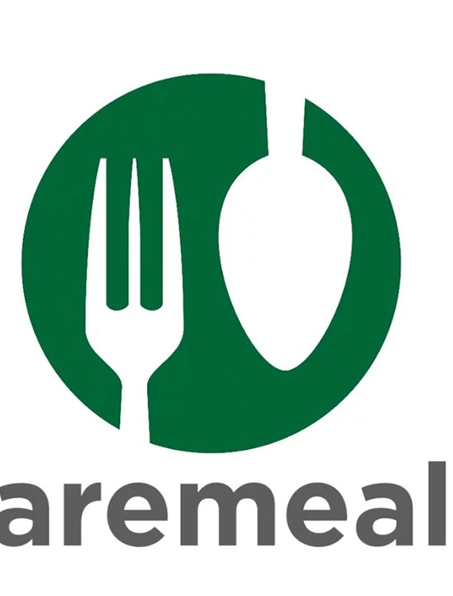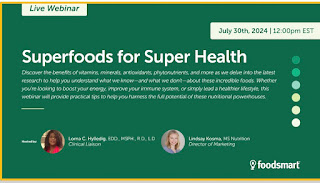The Public Health Issue of Food Insecurity
Despite the status of the United States as one of the wealthiest nations, the United States struggles with ensuring that all of its citizens have access to nutritious food that is sufficient to meet their needs. This blog post addresses the issue of food insecurity in the USA, and associated causes and consequences as well as a call to action to address what is considered to be a "silent crisis."
What is Food Insecurity?
Food insecurity describes the experience of inconsistent access to sufficient food to sustain an active and healthy lifestyle. Food insecurity has an adverse effect on both individuals and families and children, the elderly as well as working adults are susceptible. Food insecurity affects seniors, children, rural communities, those living in food deserts, African Americans and Latinos disproportionately and college and university students.
Based on data from the United States Department of Agriculture (USDA), in 2019, approximately 11 % of American households experienced food insecurity. The Covid-19 pandemic exacerbated this adverse experience. Based on Feeding America's data, 21 % of black Americans may have experienced food insecurity in 2021 compared with 11% of white Americans. Based on information provided by Burch (2020), risks for food insecurity occur in 1 out of 3 college students and these risks are associated with…
• rising tuition costs
• disadvantaged backgrounds (i.e., low-income families, ethnic minorities)
• non-traditional backgrounds (i.e., students who have children)
• unemployment status and
• individuals with weak support systems (Smith & Meade, 2019).
Factors Contributing to Food Insecurity:
* Unemployment and Underemployment: these factors have a severe effect on the ability of individuals and families to purchase nutritious food. Following the onset of the Covid-19 pandemic, many Americans whose employment status had been affected have experienced varying degrees of food insecurity.
* Perception that nutritious foods are more expensive: People with financial barriers tend to choose what they perceive to be the cheaper alternatives and often purchase highly processed foods and fast foods.
* Poverty: This socio-economic factor is a very significant influence in the experience of food insecurity. The challenges with consistently obtaining affordable and nutritious foods often lead to sub-optimal nutrition status.
Common Consequences of Food Insecurity:
* Impaired Health: Poor nutrition associated with the experience of food insecurity trigger the development of numerous health issues which include but are not limited to manifestations of malnutrition, overweight and obesity, diabetes, and cardiovascular disease.
* Developmental problems and delays in children.
*Poor academic performance and concentration in children: this is associated with hindrance of cognitive development, and distractions associated with hunger and malnutrition.
* Elevated healthcare costs: healthcare costs related to poor nutrition place a significant burden on the already limited incomes of most individuals and families experiencing food insecurity.
* Strain on the overall productivity of the nation.
A Call to Action:
Although currently considered a "silent crisis," the issue of food insecurity deserves the nation's full awareness, attention and call to action. The issue of access to nutritious food as a fundamental human right must be examined. The root causes of food insecurity including social justice issues, lack of awareness and education regarding food insecurity must be addressed.
The following are actions that can be taken:
* Supporting Community Initiatives: initiatives such as community gardens, farmers' markets, and urban farming may help to provide access to fresh, nutritious foods in food deserts and other underserved communities.
* Raising awareness and educating the nation about food insecurity.
* Promoting nutrition education and awareness in underserved communities: educating underserved communities about budgeting, making healthier food choices within their budgets, and empowering them regarding good nutrition and cooking skills can be very beneficial.
* Addressing social justice issues prevalent in underserved communities and improving programs such as school meal programs can bring some relief to those affected.
* Supporting Local Food Banks and Nonprofits: supporting and donating to local food banks and nonprofit organizations can help reduce the large gap between surplus food and waste and the deficits experienced by those that are in need of food supplies.
Limiting Food Insecurity on the College/University Campus:
Start a campus food pantry
• Georgetown University’s Hoya Hub food pantry, for example, has significantly reduced campus wide food
insecurity by serving over 400 food insecure students (Garino, 2020).
Start a campus garden
• Campus gardens, such as the University of Tennessee's Grow Lab, often donate produce to campus and local
food pantries to fight food insecurity (UT Re-cycling to Fight Food Insecurity with New Campus Garden, 2018).
- Provide opportunities for meal sharing for example New York University's Share Meals where students donate meal swipes to other students in need.
REFERENCES:
Burch, J. (2020). 1 in 3 college students faces food insecurity. The Hill. Retrieved February 3, 2020, from https://thehill.com/changing america/respect/poverty/480339-have-you-heard-the-joke-about-college-kids-living-on-ramen
Caspi, C. E., Davey, C., Friebur, R., & Nanney, M. S. (2017). Results of a pilot intervention in food shelves to improve healthy eating and
cooking skills among adults experiencing food insecurity. Journal of Hunger& Environmental Nutrition, 12 (1), 77-88. doi:10.1080/1932
0248
Garino, K. (2020). Hoya Hub Offers Solution to Food Insecurity on Campus. The Hoya. Retrieved March 19, 2020, from
https://thehoya.com/ho ya-hub-offers-solution-to-food-insecurity-on-campus/
Hartline-Grafton, H. (2017, December). Hunger & Health: Impact of Poverty, Food Insecurity, and Poor Nutrition. Food Research &
Action Cen ter. https://frac.org/research/resource-library/hunger-health-impact-poverty-food-insecurity-poor-nutrition-health-well
Pappano, L. (2016). Leftover Meal Plan Swipes: No Waste Here. The New York Times. Retrieved April 27, 2020, from
https://www.nytimes.com/2 016/08/07/education/edlife/what-to-do-with-those-leftover-meal-plan-swipes.html
Smith, M. D., & Meade, B. (2019, June 3). Who Are the World's Food Insecure? Identifying the Risk Factors of
Food Insecurity Around the World . Retrieved April 27, 2020, from https://www.ers.usda.gov/amberwaves/2019/june/who-are-the-world-s-food-insecure-identifying -the-risk-factors-of-food-insecurity-around-the-world/
UT Recycling to Fight Food Insecurity with New Campus Garden. (2018, October 25). Retrieved April 27, 2020, from
https://news.utk.edu/2018/ 09/12/ut-recycling-to-fight-food-insecurity-with-new-campus-garden
Lorna C. Hylledig EdD., MSPH., RDN., LDN












Thanks for such a great post and the review, I am totally impressed! Keep stuff like this coming.
ReplyDeleteMagnesium Supplement Pakistan
Ankara'da belediyenin parke taşı Kilit taşı fiyatları projeleri fiyatları etkiliyor mu?
ReplyDeleteThe Nutrition Program Ponte Vedra Beach in Jacksonville are very helpful.
ReplyDeleteThanks for such a great post and then review, Women's Health
ReplyDelete